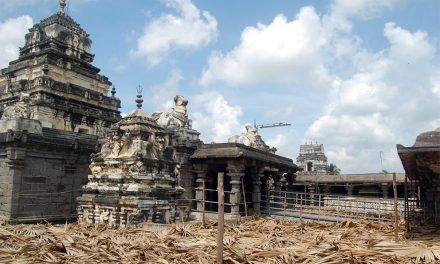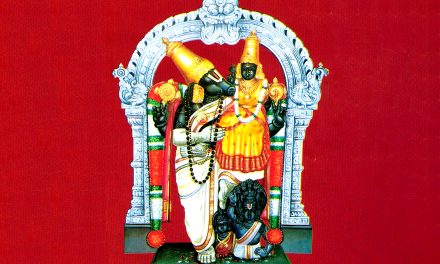Kalpvaas has a special significance in Prayag. It holds special significance in the month of Magh, and it lasts from the 11th day of the month of Paush till the 12th day of the month of Magh. Kalpavas is marked by patience, non-violence and devotion, and meals are to be partaken only once a day. It is believed that Kalpavasis who fulfill all the vows get reborn as a king.
Uttar Pradesh is one of the most ancient cradles of Indian culture. While it is true that no Harappa and Mohan-Jodaro have been discovered in the State, the antiquities found in Banda (Bundelkhand), Mirzapur and Meerut link its history to early Stone Age and Harappan era. Chalk drawings or dark red drawings by early inhabitants are extensively found in the Vindhyan ranges of Mirzapur districts. Utensils of that age have also been discovered in Atranji-Khera, Kaushambi, Rajghat and Sonkh. Copper articles have been found in Kanpur, Unnao, Mirzapur, Mathura and advent the Aryans in this State. It is most probable that snapped links between the Indus Valley and Vedic civilizations lie buried under the ruins of ancient sites found here.
Vedic Period
There is hardly any mention of the area comprising present Uttar Pradesh in Vedic hymns. Even the sacred rivers, the Ganga and Yamuna, appear only on the distant horizon of the land of the Aryans. In the later Vedic age, the importance of Sapta Sindhu recedes and Brahmarshi Desh or Madhya Desh assumes significance. The region comprising Uttar Pradesh at that time became a holy place of India and foremost center of Vedic culture and knowledge.
The new States of Kuru-Panchal, Kashi and Kosal find mention in late-Vedic texts as prominent centers of Vedic culture. The people of Kuru-Panchat were regarded as the best representatives of Vedic culture. They enjoyed great respect as outstanding orators of Sanskrit. The conduct of schools and institutions by them was laudable. The life of their kinds was a model for other kings and their Brahmins were held in high esteem for their piety and scholarship.
The Upanishads prominently mention the Panchal Parishad. The scholars from Kuru-Panchal were specially visited by the Videsh king on the occasion of Ashwamedh yajna. The Panchal king Pravahan Jaivali himself was a great thinker who was praised even by Brahmin scholars like Shilik, Dalabhya, Shvetketu and his father Uddalak Aruni. Ajatshatru of Kashi was another great-philosopher king whose superiority was acknowledged by Brahmin scholars like Dripti, Valhaki, Gargya etc., Literature in various disciplines was authored on an extensive scale during this age, culminating in the Upanishads. They signify the highest reach of human imagination. The Upanishad literature was the product of meditation in the ashrams of the sages, several of which were in Uttar Pradesh. Eminent sages like Bharadwaj, Yajnavalkya, Vashishta, Valmiki and Atri have either their ashrams here or were otherwise connected with this State. Some Aranyans and Upanishads were also written in the ashrams located in this State.
Post-Vedic Period
The cultural heritage of Uttar Pradesh was maintained in the period of the Ramayan and Mahabharat, i.e. the epic period. The story of Ramayan revolves round the Ikshwaku dynasty of Kosal, and of Mahabharat around the Kuru dynasty of Hastinapur. Local people firmly believe that the ashram of Valmiki, the author of Ramayan, was in Brahmavart (Bithoor in Kanpur District) and it was in the surroundings of Naimisharany (Nimsar-Misrikh in Sitapur district) that Suta narrated the story of Mahabharat as he had heard it from Vyasji. Some of the Smritis and Puranas were also written in this State.
Gautam Buddha, Mahavir, Makkhaliputta Goshal and great thinkers brought about a revolution in Uttar Pradesh in the 6th century B.C. Out of these, Makkhaliputta Goshal, who was born at Shravan near Shravasti, was the founder of the Ajivika sect.
Mahavir, the 24th Trithankar of the Jains, was born in Bihar but had a large number of followers in Uttar Pradesh. He is said to have lived twice during the rainy season in this State — once in Shravasti and the second time in Padrauna near Deoria. Pawa proved to be his last resting place. In fact, Jainism had entrenched itself in this State even before the arrival of Mahavir. Several Tirthankars such as Parshwanath, Sambharnath and Chandraprabha were born in different cities in this State and attained ‘Kaivalya’ here. Jainism must have retained its popularity in this State in Subsequent centuries also. This fact is borne by the ruins of several ancient temples, buildings, etc. The remains of a magnificient Jain Stupa have been dug out near Kankali Tila in Mathura, while Jain shrines built in the early Middle Ages are still preserved in Deogarh, Chanderi and other places.
The Age of Buddha
The founder of Buddhism, Gautama the Buddha, was born in Lumbini in Nepal. His father, King Shuddodhan, was the ruler of a small State, Kapilvastu, now in Siddharthnagar district. His mother, Maya, belonged to the ruling family of another small state, Deodah, which is now in Deoria district.
The Buddha attained enlightenment at Bodh Gaya in Bihar, but it was in Isipattan or Mrigdav in Sarnath in Uttar Pradesh that he preached his first sermon and laid the foundation of his Order. From this point of view, Sarnath has the distinction of being the birth place of ‘Dhamma’ and ‘Sangha’, the two elements of the Holy Trinity of Buddism, the third being the Buddha himself.
Other notable places in Uttar Pradesh followed by Buddha’s association are Kushinara of Kushinagar (in Deoria district) where he attained ‘Mahaparinirvana, Shravasti the capital of Kisal where he performed a great miracle, and Sankashyar Sankisa in Etah district, where another miracle of his life occurred. The rulers of several states in the then Uttar Pradesh were greately influenced by the teaching of Buddha.
The People of the State also did not lag behind in showing love and devotion to the Tathagat, the greater part of whose monastic life was spent in Uttar Pradesh. Thus it will be no exaggeration to describe Uttar Pradesh as the Cradle of Buddhism. Besides Buddhism and Jainism, Pauranic Brahmanism also had deep roots in the state. With ancient images of gods and goddesses of brahmanical order, a temple of Kushan period has been found which alludes to Brahmanism. In fact, Mathura can be said to be the birthplace of Indian sculpture. Other temples of this faith built in different periods are found in Varanasi, Allahabad, Ballia, Ghazipur, Jhansi and Kanpur.
Middle Age of Synthesis
In successive centuries after Buddha, Ayodhya, Prayag, Varanasi, Mathura and several other cities continued to an play important role in the making of the religious and cultural history in India. Several kings who ruled the region became immortal because of Vedic rituals performed by them and patronage extended by them to learning. Scholars like Ashwaghosh, Kalidas, Ban, Mayur, Diwakar, Vakpati, Bhavbhuti, Rajshekhar, Laxmidhar, Sri Harsh and Krishna Misra adorned their courts. Yuan-chwang says that the people of Uttar Pradesh were full masters of the language and spoke it correctly. Their pronunciation was like that of the Devas, elegant and beautiful, and their intonation clear and distinct, worthy of emulation by others. The rules framed be these people were accepted by all. Rajashekhar of Pratihar also pays homage in a similar vein to the people and poets of Panchal.
Varanasi continued to be a prominent centre of learning as in the past. Ayodhya and Mathura acquired fame as birthplaces of Ram and Krishna. Pilgrims from every corner of the country continued to throng to Prayag, and as such it was called the Tirtharaj. Similarly, the north mountain region, where Kailash and Mansarovar are situated and from where the holy rivers of the country originate, also remained sacred for the piligrims. Shankaracharya established one of the four prominent sacred Dhams in Badrikashram in this region.
Middle Age
The liberal traditions continued to flourish in Uttar Pradesh in the Middle Age, as well. Varanasi remained a prominent centre of Hindu learning and Jaunpur, under the Sharqi rulers, a prominent center of Islamic culture. Jaunpur was describing as the ‘Shiraz’ of India. The Sharqi rulers were patrons of music also and there were many famous musicians in their court. Brij region was an important center of devotional music in those days. It was in Uttar Pradesh that Sufis took inspiration from Hindu thought and philosophy. Ramanand and his famous disciple Kabir and other saints like Ravidas, Darya Shah and Guru Gorakhnath were some of the great men of those times who gave a new direction to the life and culture of this State.
The Hindu teachers laid emphasis on monotheism (oneness of God) and focused attention on the meaninglessness of the caste system. The Muslim Sufis were greatly influenced by mysticism. All these saint-poets contributed to the enrichment of both Hindi and Urdu literature. A notable contribution was made by Sultan Feroz Tughlaq, who got Sankrit works translated into Presian. Among the authors of this age, Zia-ud-din Barni will always be held in high esteem. The tradition of cultural synthesis, which was started by the Sufis and saints during the rule of Sultans, received great impetus during the reign of wise Mughals. It was a time when a distinct liberal outlook was discernible in all the spheres of human life such as religion, art and literature.
Many Madaras and Makatabs were opened for Muslim education and Varanasi became the traditional center of Hindu education. Hindi and Urdu literatures developed further and the work of translation of Sanskrit books into Persian gained nomentum. Tulsidas, Surdas, Keshavdas, Bhushan, Malik Mohammad Jayasi, Raskhan, Matiram, Ghananand, Bihari, Dev and Giridhar Kavirai were some of the great poets who brought laurels to Uttar Pradesh. After the disintegration of the Mughal empire, smaller states which came along also pursued a policy of giving patronage to poets and musicians.
Several styles of architecture can be seen in Uttar Pradesh. There are buildings built in the Hindu Buddhist styles and Royal memorials and monuments of Indo-Islamic architecture. Buildings constructed in Avadh and Sharqi styles of architecture are also remarkable. In the Jatakas and other ancient works we find descriptions of several such cities, palaces and forts, which were at onetime situated within the confines of Uttar Pradesh, and of which there is no longer any trace. An almost similar fate was met by the Stupas, etc., which were built by Shakya, Malla and other rulers in this State in the 6th century B.C. The famous Jain stupa whose ruins have been found in Kankali Tila in Mathura was also built during this period.
Home of the Kumbh Mela, Triveni, holy Prayag, and meeting place of humanity’s pious masses, the State of Uttar Pradesh is surely one of the most fascinating places on the planet.












